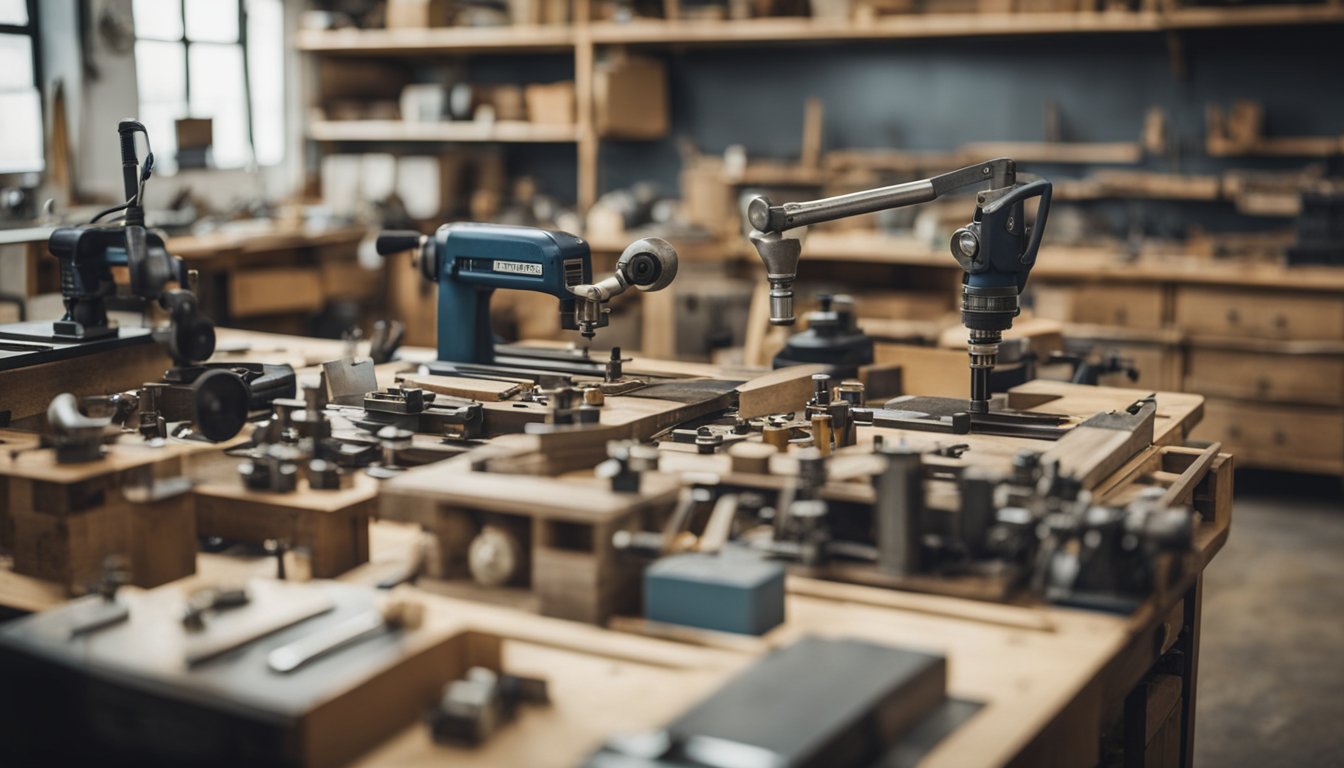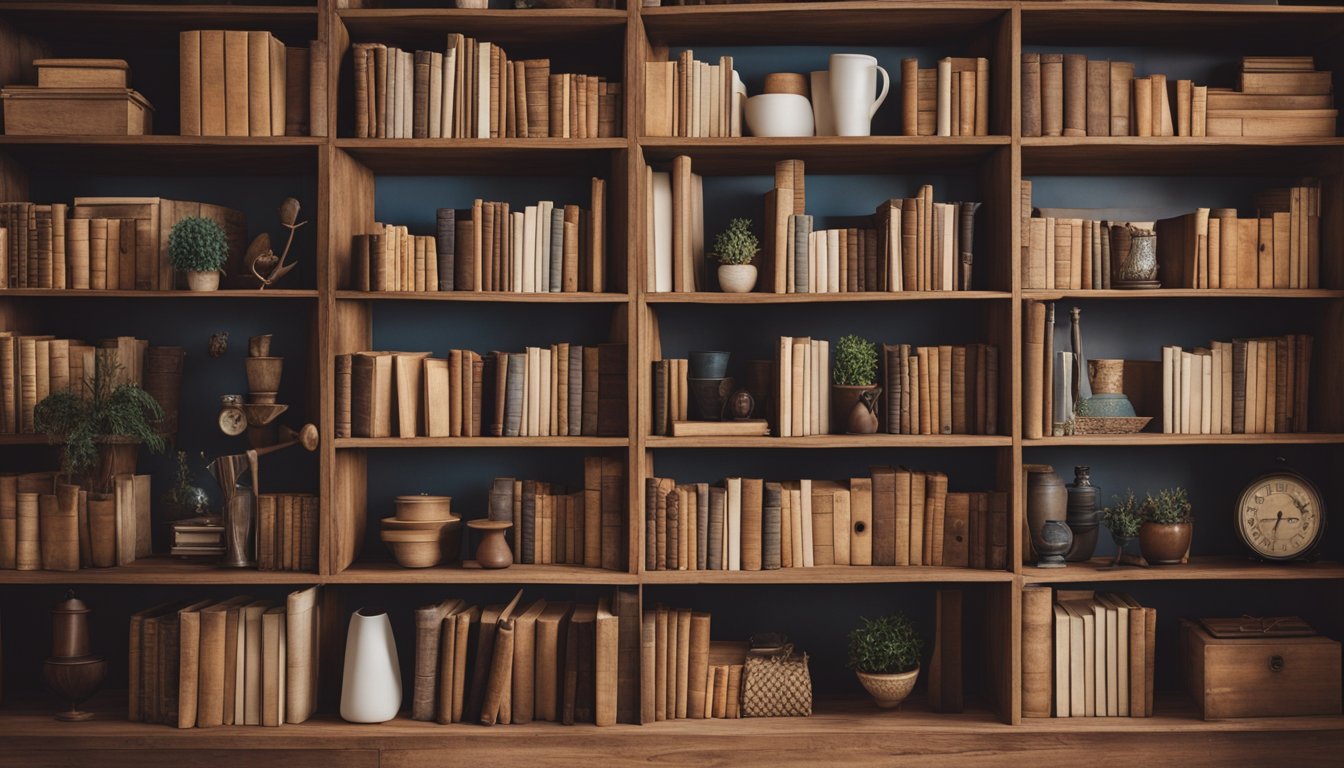Late updated: 05 Apr 2025 13:04
Written by: Sarah Hollister
Creative Ways To Upcycle Old Furniture: Transform Your Space
Upcycling old furniture is a creative and sustainable way to breathe new life into pieces that might otherwise end up in landfill. By reimagining and repurposing worn or outdated items, we can create unique pieces that reflect personal style and contribute to a more environmentally friendly lifestyle. From converting an old cabinet into a chic bar to transforming a dresser into a functional sink vanity, the possibilities are nearly endless.

Discovering innovative projects for upcycling furniture not only satisfies a creative itch but also provides an opportunity to experiment with different materials and techniques. This approach encourages resourcefulness, as we often find solutions for updating furniture using items already at hand. Whether it's through painting, reupholstering, or incorporating unexpected materials, upcycling is an art that can be both fun and rewarding.
Engaging in upcycling projects also allows us to be part of a larger community of DIY enthusiasts, sharing ideas and inspiration for furniture makeovers. It's a movement that combines creativity with practicality, leading to one-of-a-kind results that we can truly call our own.
Key Takeaways
- Upcycling furniture is sustainable and creative.
- Innovative projects transform old furniture into unique items.
- Upcycling fosters a community of DIY enthusiasts.
The Art of Upcycling Old Furniture
Transforming old furniture into functional pieces can be both rewarding and sustainable. We'll explore how to choose suitable items to upcycle, the essential tools needed, and the importance of approaching each project with creativity and practicality.
Understanding Upcycling and Repurposing
Upcycling is a creative process where we repurpose old furniture into new, functional pieces without deconstructing them completely. This eco-friendly approach not only breathes new life into items but also minimises waste. For instance, transforming an old door into a unique dining table not only saves resources but also adds character to our spaces.
Repurposing is the key to upcycling effectively. By identifying the potential in seemingly outdated items, we can unlock numerous possibilities. A vintage suitcase, for example, can become a chic coffee table or even unique storage. Thinking creatively and seeing value in the materials at hand is essential for successful upcycling projects.
Choosing the Right Furniture Pieces
Selecting the right piece of furniture is crucial to a successful upcycling project. We should look for pieces with solid structures, even if their surfaces seem worn or dated. Solid wood items, such as chairs and dressers, are ideal as they provide durability and can be sanded or painted easily.
Identifying existing features that we can enhance further may also be beneficial. For instance, a dresser with ornate handles could be revitalised with a fresh coat of paint while retaining its charming details. It's important to avoid items with significant damage that might be beyond repair or unsafe.
Gathering Tools and Materials
Equipping ourselves with the right tools and materials is vital for any DIY upcycling project. Basic tools like screwdrivers, hammers, and sandpaper are essential. Depending on the project, we may need paintbrushes, varnish, or upholstery materials too.
Safety equipment such as gloves and masks protects us from dust and fumes, ensuring our projects are not only creative but also safe. We should also consider sustainable materials where possible, such as eco-friendly paints or recycled fabric, to align with the philosophy of upcycling.
Innovative Upcycling Projects

Upcycling old furniture can breathe new life into items that might otherwise be discarded. We can transform functional pieces into unique, stylish additions to our homes through creative methods.
Transforming Dressers into Unique Pieces
Dressers can often appear outdated, yet their sturdy structure makes them excellent candidates for upcycling. We can begin by removing outdated hardware and adding fresh, modern handles or knobs. Sometimes, a simple coat of paint in a bold colour can dramatically change the dresser's appearance.
To add further uniqueness, consider strategic drawer removal. Removing the top drawer and installing a wine rack can transform a dresser into a chic mini-bar. Alternatively, lining the inside of the removed drawers with patterned wallpaper can create visually appealing open shelves. This gives a fresh look while maintaining functionality, making these transforms versatile and innovative.
Revamping Coffee Tables with Stencils
Coffee tables often serve as focal points in living rooms, making them perfect for creative upcycling projects. Stencils allow us to add intricate designs without requiring advanced artistic skills. We begin by choosing a stencil pattern that complements the room's decor.
Once we have selected a design, it’s crucial to prepare the table surface by sanding it and applying a primer. This ensures the paint adheres properly. Using chalk paint can achieve a vintage look, while metallic paints offer a modern vibe. By layering paint through the stencil, we can create diverse and compelling patterns that elevate the table's aesthetic appeal.
Creating Shelving from Unexpected Items
Innovative shelving solutions can emerge from the most unconventional materials. Repurposing old drawers as shelves offers an eye-catching storage option. By adding a fresh coat of paint and mounting them on walls, these drawers can become striking decorative elements.
Alternately, salvaged wooden pallets or ladders can serve as rustic shelves. Painting sections in contrasting colours can provide visual interest while ensuring they fit seamlessly into existing decor. Upcycled shelves not only offer storage but also add character and a touch of creativity to any space, showcasing our ability to think outside the box.
Crafting a Charming End Table
Old wooden chairs or even small dressers can find new life as end tables. By removing the backrest and priming the surface, we can repaint chairs to create a vibrant accent piece. Adding a wooden or glass top can provide additional surface area for a more traditional table feel.
For dressers, chopping them down to a suitable height and updating their look with a new paint job can yield charming end tables. An unexpected yet charming transformation involves using a vintage suitcase as the table's top and attaching legs to its base—this creates a nostalgic and functional piece that stands out in any room.
Frequently Asked Questions

Let's address key questions about upcycling old furniture. We'll explore techniques suitable for beginners, give life to outdated furniture through examples, and offer innovative ways to repurpose bedroom pieces. Discover which paints are best for furniture transformations and understand the common terminology for these creative projects.
What are the best techniques for novices to begin upcycling furniture?
Novices should start with simple projects like repainting, adding new hardware, or applying decoupage techniques. These methods are straightforward and provide an excellent introduction to upcycling. Repurposing small items such as stools or side tables can build confidence and skills for more complex tasks.
Could you showcase some before and after examples of refashioned furniture?
A classic example is turning an old door into a stylish dining table. Picture a worn-out chest of drawers transformed into a chic bathroom vanity. By comparing photos of the original piece and the finished result, one can see the dramatic change in aesthetic and function such projects can achieve.
What are innovative ideas for repurposing old bedroom furniture?
Transform a dresser into a vanity by adding a mirror and new handles. Convert a headboard into a unique bench for extra seating or an entryway feature. Old bedside tables can be stacked for creating a stylish shelving unit, offering both storage and decorative appeal.
How can one reimagine a piece of furniture to give it a new lease of life?
Identifying a new purpose for existing furniture is key. For example, converting a ladder into a decorative shelf or crafting a sideboard from an old cabinet enhances usability. Focus on creativity and functionality, allowing a piece to serve a new role in our living spaces.
Which type of paint is recommended for furniture upcycling projects?
Chalk paint is popular due to its versatility and ease of use, requiring little preparation and giving a matte finish. For durability, especially in high-use areas, a high-quality acrylic paint is advisable. Both options offer a variety of colours to suit various styles and preferences.
What is the process of repurposing old furniture commonly referred to as?
The process of giving new life to old furniture is often called upcycling. This involves creatively reusing or enhancing items, making them suited for modern aesthetics without losing their original charm. Through upcycling, we embrace sustainability and uniqueness in home décor.
